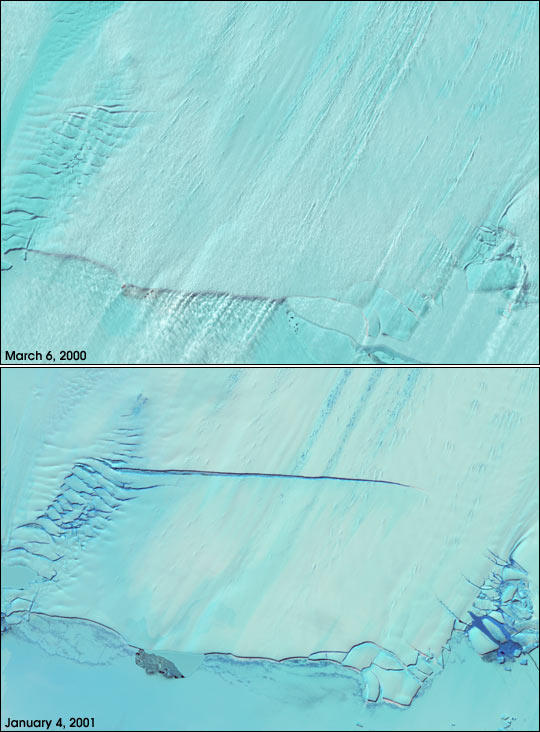


There is a new crack in Antarctica's icy armor. The earliest stages of the formation of a massive iceberg was captured by NASA's Landsat 7 satellite on January 4, 2001. As is evident in this pair of Landsat 7 images, there was no crack in the March 2000 scene, but by January the crack had grown to more than 25 km (15) miles long, stretching more than two-thirds of the way across the Pine Island Glacier.
According to NASA Glaciologist Robert Bindschadler, most of this crack formed very rapidly, in less than five weeks. Currently, the crack is growing much more slowly, at about 13 meters (40 feet) a day. Bindschadler's prediction is that the crack will result in the calving of a major iceberg in probably less than 18 months.
Landsat 7, a cooperative mission between NASA and the United States Geological Survey, Reston, Virginia, completed its second annual continent-wide mapping of Antarctica last month. With its capability to see features as small as 15 meters (50 feet) across, Landsat 7 provides the most detailed observations available of the remote continent, many parts of which have never been mapped at this resolution before. Landsat 7 passes over the continent 16 times a day in its nearly pole-to-pole orbit, taking an average of 300 images each week during the Antarctic summer (November to February) when the surface is best illuminated with sunlight.
For more details, images, and animations, read NASA Image Reveals Giant Chip off the Antarctic Ice Block
Image courtesy NASA GSFC Scientific Visualization Studio, based on data from the Landsat 7 science team.